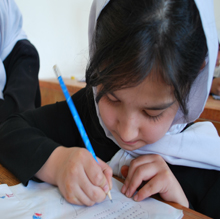Since the events of August 2021, the World Bank has provided close to $2 billion in support to the Afghan people.
Through Approach 1.0, the World Bank provided $280 million in funds from the Afghanistan Resilience Trust Fund (ARTF) to UNICEF and the World Food Program. This was for humanitarian gap financing to meet emergency health and nutrition needs.
Through Approach 2.0, the World Bank and ARTF donors have been supporting the Afghan people since early 2022 with critical health, education, food security, livelihoods, and water services provided at scale nationwide.
Through Approach 3.0, the World Bank is now making IDA funds available to complement ARTF financing and to continue to support the people of Afghanistan with basic services. IDA grants will be provided directly to United Nations agencies and other public international organizations. The World Bank coordinates closely with other development partners who provide complementary financing to these critical activities.
In all cases, funds provided have remained outside the systems and control of the Interim Taliban Administration (ITA) and have focused on service delivery for women and girls.
What Is Approach 3.0?
In February 2024, the World Bank’s Board of Directors endorsed Afghanistan “Approach 3.0”. Under this approach, grants from the International Development Association (IDA) will be provided to United Nations agencies and other public international organizations. These funds will continue supporting basic services nationwide, particularly those benefiting women, and will be outside the control of the Interim Taliban Administration (ITA).
Approach 3.0 continues the “principled approach”—started under Approach 2.0—which puts women at the center of projects and ensures that project activities are implemented by and for women. The World Bank’s independent third-party monitoring agent will continue to verify all project activities.
As part of delivering basic services at scale, Approach 3.0 will support employment opportunities by bolstering income-generating activities, especially microfinance, by facilitating the participation of the private sector in delivery of aid.
Under Approach 3.0, the World Bank Group will continue to work with all multilateral and bilateral partners to ensure coordinated basic services aid for the Afghan people.
In addition, under Approach 3.0 project activities in Afghanistan will resume under the Central Asia-South Asia Electricity Transmission and Trade Project (CASA-1000) in a ring-fenced manner to ensure all construction payments and future revenue are managed outside of Afghanistan and do not involve ITA systems.
CASA-1000 is a regional project to bring clean energy from Tajikistan and Kyrgyz Republic to Pakistan via Afghanistan. Construction in the other three countries is nearly complete, and these countries have requested that CASA-1000 activities in Afghanistan resume to avoid the risk of the project becoming a stranded asset. .
What Is Approach 2.0?
Approach 2.0 as approved by the World Bank’s Board of Executive Directors on March 1, 2022, based on the decision of the Afghanistan Resilience Trust Fund (ARTF) donors and the international community to support the people of Afghanistan. The approach is guiding the provision of more than $1.3 billion in funds from the ARTF as recipient-executed grants to select United Nations agencies and international NGOs. This approach aims to support the delivery of essential basic services, protect vulnerable Afghans, and help reduce the need for humanitarian assistance in the future. These projects support the delivery of health and education services, food security, water, and community livelihoods.
Last Updated: Feb 09, 2025

